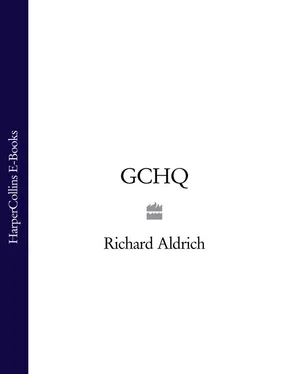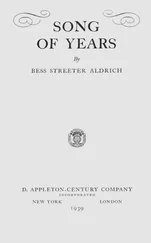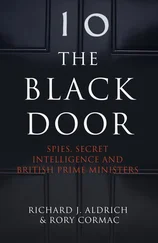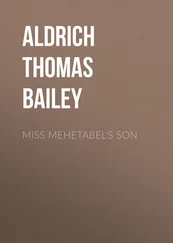The Korean War resulted in a headlong expansion of American sigint. More than two thousand additional staff were recruited, and more than $5 million of additional spending on comint and comsec was authorised within weeks of the war commencing. 44 The outbreak of the war also meant crash expansion in Asia. The Americans informed London of their ‘urgent need’ for a US Air Force sigint unit to be deployed to Hong Kong, and other sites were quickly developed on Taiwan in an attempt to remedy the yawning intelligence gap in East Asia. 45
Korea had another important impact. With new employees flooding into the training wing at Nebraska Avenue in central Washington DC, the Americans soon had a vast backlog of people requiring security clearance before they could begin work. By the end of 1950, more than a third of sigint employees were ‘uncleared’. It was then discovered that since 1948 the CIA had been using the polygraph, or lie detector test, initially only to screen people who had access to sigint, although its use was soon extended to all CIA employees. By May 1951 it had been adopted for all American code-breakers, and polygraph examiners were testing ‘from seven in the morning till eleven at night’ to clear the backlog. Polygraphs soon became an embedded part of American sigint culture, but were not introduced at Britain’s GCHQ. 46
The Korean War was of enormous importance for GCHQ because it fundamentally reshaped the American sigint community. There had been several failed attempts to create a single unified American sigint organisation along the lines of GCHQ. 47 The war broke the logjam. In 1952, President Truman suddenly insisted on the creation of a strong central body called the National Security Agency, or ‘NSA’, under General Ralph Canine. The armed services fought a desperate rearguard action: in August 1952, General Samford of US Air Force intelligence denounced Truman’s desire for ‘strong central control’ as nothing short of a ‘major error’. However, Truman’s mind was made up, and in November he signed the order for the reshaping of American comint. 48 NSA was given unambiguous control over comint in a historic document called NSCID-9. 49 This brought about a reduction in, but not the elimination of, what the leading historian of NSA has called ‘the fractious and seemingly never-ending internecine warfare’ between the American service comint organisations. The British were immensely relieved. In the background, figures like Edward Travis had been quietly urging inter-service unity on their American collaborators since the summer of 1945. 50
The creation of NSA also had physical consequences. Up until this point there had been a plan to relocate the headquarters of American sigint to Fort Knox, near Louisville in Kentucky. However, it was now realised that the need for high-grade communications circuits and for civilian workers made this impossible. The policy-makers, who were the consumers of their intelligence ‘product’ in Washington, also protested about the move, rightly anticipating that it would mean a worse sigint service. They insisted that the new headquarters be within a twenty-five-mile radius of the Washington area. 51 On 3 November 1952, Fort Meade on the northern edge of Washington’s Beltway was designated the likely new headquarters for NSA under a secret programme entitled ‘Project K’. Over the next five years this location would become the headquarters of the world’s largest, most expensive and most secretive intelligence agency 52
Britain’s GCHQ had made precisely the opposite decision. In 1952 it moved away from its suburban site at Eastcote on the perimeter of London to a comparatively distant location at Cheltenham in Gloucestershire. Although GCHQ had only finished the move to Eastcote in June 1946, by April 1947 it was already looking for a new home. This was partly because of the physical limitations of the Eastcote site, and also because Travis realised that in any future war there would not be time to relocate to a safe place like Bletchley, away from Soviet bombing. Several possibilities were considered, and in October 1947 GCHQ scouts had found promising twin sites at Oakley Farm and Benhall Farm, near Cheltenham, which were occupied by the Ministry of Pensions. These single-storey temporary office complexes had been built in 1940, initially for the possible evacuation of government from London during the Blitz. After 1942 they were used for the logistical organisation of the US Army in Europe. The wartime presence of the Americans was the key, since it had left a helpful legacy of improved trunk cable communications. 53
An alternative explanation for the choice of Cheltenham is offered by Professor R.V. Jones, one of the famous architects of the ‘Wizard War’ which deployed British science against Nazi Germany. Jones served as scientific adviser to GCHQ in the early 1950s, and recalls that the scout who initially found the Cheltenham site was Claude Daubney, one of the senior GCHQ staff who liaised with the Y Units of the armed services, and who spent much of his time in Whitehall. Daubney was a typical RAF officer of the thirties, handsome and ‘heavily moustached’. His main relaxation was betting on horseraces, and he argued endlessly with Jones about the theoretical possibility of beating the bookmakers. He ‘deliberately chose Cheltenham, as he told me, so that he could combine visits from his London office to GCHQ with attendance at Cheltenham races’. 54 Others support the idea that GCHQ was attracted to Cheltenham by its proximity to the racecourse. 55 Whatever the truth of the matter, the course would serve as an occasional helicopter landing pad for future visits by British Foreign Secretaries. 56 The move from Eastcote took place between 1952 and 1954, but the rapid growth of GCHQ during the Korean War meant space was tight even at the new location. This contributed to the decision to constitute comsec as a separate organisation called the London Communications Security Agency. Its staff either moved to central London offices in Palmer Street, or stayed at Eastcote. 57
In its move to Cheltenham, GCHQ created a unique intelligence town. It brought with it Bletchley Park’s formidable reputation for secrecy. Within a decade almost everyone in Cheltenham had a family member or friends who worked at GCHQ, but nobody talked about what they did. The town welcomed the ‘Foreign Office types’ with open arms, and GCHQ was soon contributing an enormous amount to its intellectual and artistic life, quite apart from being its biggest employer. The GCHQ staff were also sporty, providing most of the players in the Foreign Office football team that won the Civil Service Football Cup in 1952. This could present some peculiar problems. When local reporters covered matches in Cheltenham, they were told they could name the goal-scorers of the visitors, but not of the local team. Reporting these games tested their copywriting skills to the very limit. 58
The previous ten years had been a formative decade for GCHQ. By 1944, the code-breakers of Bletchley Park had made themselves Britain’s premier intelligence service. Out of the chaotic brilliance housed in a few wooden huts in the Buckinghamshire countryside came one of Britain’s most forward-looking and innovative organisations. Another crucial legacy of the late 1940s was the agreements with the United States and the Commonwealth that laid the foundations of UKUSA, a worldwide sigint alliance, agreements that are still in force today. Anxiety about Moscow had been a driving force behind these agreements, and even before the Second World War was properly over, the Western allies had been paying increased attention to Soviet cyphers. Despite the triumphs of Venona, and the uncovering of key KGB agents like Klaus Fuchs and Donald Maclean, Moscow’s higher-level communications remained mostly unbreakable after 1948. Accordingly, GCHQ and its partners were already searching for new kinds of intelligence-gathering to use against the Soviet Union, opening up a whole new vista in the electronic war. 59
Читать дальше












